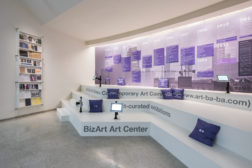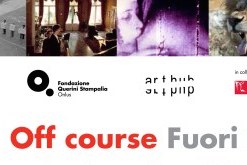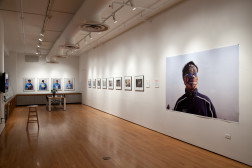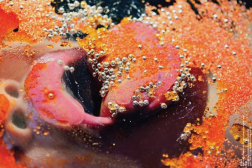100 Asian Contemporary Artists
100 Asian Contemporary Artists By Jinsuk Suh , Director of Gallery Loop
This publication aims to provide opportunities for the public to closely encounter the unique characteristics of contemporary art in Asia by introducing 100 Asian artists. The publication “relocates” Asian contemporary art and its new directions via analyses and comments by artistic peers such as curators, organizers and art activists in Asia.
Invited curators/ critics (TBC):
Leng Lin, Pi Li, Zhang Qing, Davide Quadrio, Tobias Berger, Nancy Adajania, Pooja Sood, Ranjit Hoskote, Ade Darmawan, Agung Hujatnikajennong, Fumihiko Sumitomo, Kenichi Kondo, Kenji Kubota, Shihoko Iida, Suh Jinsuk, Kim Sunjung, Yoo Jinsang, Nur Hanim BT Mohamed Khairuddin, Patrick Flores, Eileen C. Legaspi-Ramirez, Ahmead Mashadi, Eugene Tan, Joanna Lee, Lindy Poh, Sharmila Pereira, Jason Wang, Jongjohn Lin, Fang-wei Chang, Manray Hsu, Apisak Sonjod, Gridthiya Gaweewong, Do Thi Tuyet Mai
Satisfaction and dissatisfaction: an old story by Davide Quadrio
“坐井观天 zuo jing guan tian”
“Once upon a time, there was a frog who lived in a well. One day, as the frog sat by the side of the well, he met a green turtle from the Eastern Sea. The frog boasted to the turtle: “Look! How nice my well is and how happy I am to live in it! When I’m in high spirits, I jump on the rim of the well. When I’m tired, I’ll find a hole in the well wall to rest inside, or simply float comfortably on the water. If I feel like a walk, I can stroll on the soft mud. Look at those poor crabs, wrigglers and tadpoles! None of them can compare with me. I’m the master here, and my home is the most comfortable and pleasant place in the world. If you like, Mr. Turtle, you’re welcome to have a look down in my well.”
The turtle was fascinated by this colorful description. He wanted to see for himself what life in the well was like. But as soon as he moved his legs, he stumbled over the railing. He had to step back very carefully. “It is so narrow and uncomfortable here,” the turtle said. Then he described the vast Eastern Sea and invited the frog to visit. “If you see the Eastern Sea, you’ll know how happy life there can be. You can swim for days without coming to the end. You’ll see loads of other sea life: sea horses, clownfish, sharks, and whales, and eat various types of food.” The frog was dumbfounded. “I don’t believe any other place is better than the well.” He simply could not imagine the scenes the turtle was telling him. He dismissed all thoughts of the sea, and continued to sing the praises of his small home. “Home sweet home. Spacious, comfy, quiet…”
In the past year or so, I have been thinking a lot about who is who and what is what in the art scene in China. I have been asking myself questions about not only who represents Chinese contemporary art in the latest ‘now,’ but also why it is represented in such a way, what directions it is being taken in, and why.
For instance, one of my preoccupations is that, when I think about contemporary art in China, I always think of the same people. The same artists, curators, gallerists, etc. The more I am involved in it the more I find this situation and my practice in this context oversimplified: a bit too easy, superficial and shortsighted.
I say this because too many questions have risen recently for me, for example, why is contemporary Chinese art in the international arena always represented by the same symbols/artists/content? Why are the same few curators all over the place? Why are collectors now being presented a history of contemporary art in China that is unified, codified and always identical? How do I contribute in doing so with my activities and exhibitions?
Despite a few attempts to represent another contemporary art in China, the more identifiably “Chinese” one (including calligraphic work or more traditional Chinese artistic practices) has been very often put on the side as too ethnic, or segregated as “decorative”, or simply as part of a different artistic category.
These considerations put into the picture a dichotomy of curatorial practices in Asia and the West (as defined in its wider sense which includes Europe and the Americas).
As Kim Honghee presents:
“As a Korean curator, or as an Asian curator, how should one achieve the curatorial difference? Self-evidently like this phrase that ’there is no nationality in curatorship, but every curator has her/his own country,’ Korean curators working in the international scene have aspirations to assume their own identities through the discourse of difference while acquiring global efficiency. However, the discourse of difference that provides academic survival and the competitiveness for curators results in a kind of discrimination. In particular, Asian curators including Koreans face the dilemmas and frustrations of neo- and post-colonial Orientalism, as expressed in popular exoticism. It is the Korean and Asian curators’ task to escape this dilemma. Due to the fact that there is neither a single solution nor an answer to this problem, curators must navigate the difference in their own curatorial strategy. Rather than resulting in success or failure, the more important element is being conscious of and having the confidence and attitude for curatorial difference. “
It seems to me that this intriguing problem needs to be addressed not only to and by curators and institutions in Asian countries, but also to and by the artists and independent organizations that are shaping the future of contemporary art in Asia.
Same old people, same old story
When I look at the situation of contemporary art in China, I see that despite the excitement for the art/goods/merchandise that is taking place and taking over, the same few people are carrying on the most interesting and deepest work in the field.
Despite common speculators and international and local amateurs that see China as the new frontier for fame and success, some artists are still fighting to bring to China a possible development.
I am glad that artists like Zhang Peili, Zhuang Hui, Geng Jianyi and Hu Jieming, just to mention few, are still activists and idealistically working in schools and universities to create an healthier environment for creation: “injecting” boring institutions with possible tools to understand how to perpetuate innovative teaching techniques and how to broadly inspire the next generation of artists, critics and intellectuals.
In all these situations, the artists who are most troubled about this displacement that the last few years of wild internationalization and commercialization of Chinese contemporary art have created are the mid-career ones. Some are also the artists with whom I have worked most closely with at BizArt Art Center. […]
[The article will be published in the book at the end of 2009]




